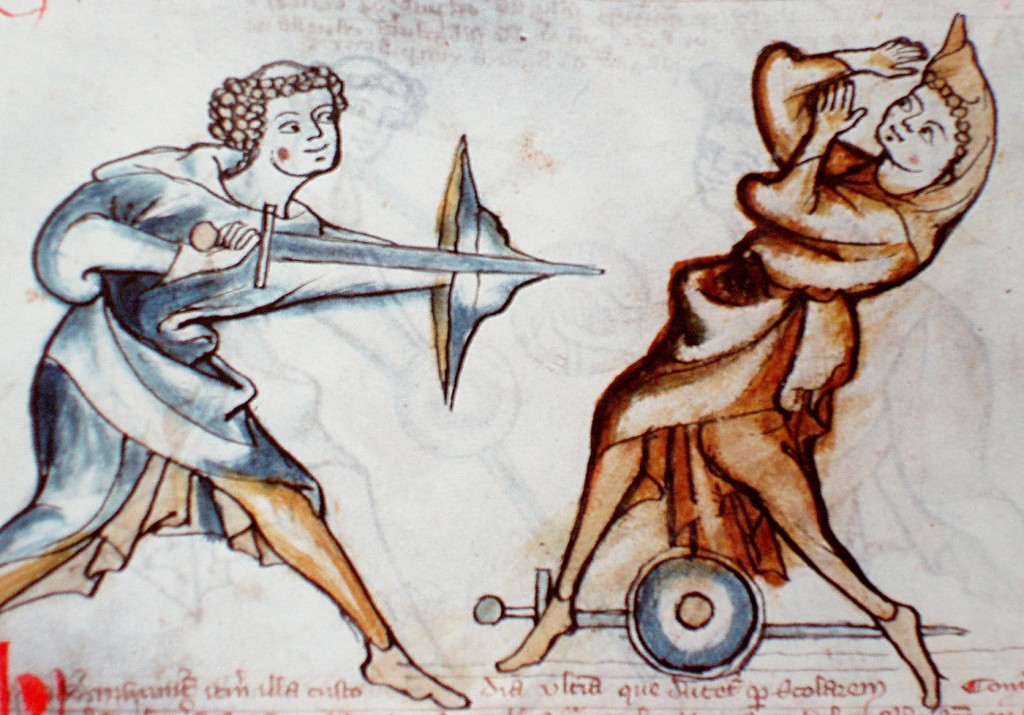French-speaking readers might enjoy the translation of this article better!
There are many ways to train martial arts, suited to different kinds of students and various contexts of application. Any martial training has some amount of risk to it, and should be frightening at first because it puts the student in a situation that humans tend to recognize instinctively as dangerous (facing someone close moving weapons fast). Overcoming the fear can be seen as a benefit of martial arts training, as it allows you to overcome your instincts in situations of need.
There are however some training methods that point out fear as a pedagogical helper. They will use the fear of pain as a motivator to not get hit. They will use unsafe gear and say that the fear of accident increases the realism of the practice and help make the student focus. I personally disagree with these methods and would not fancy studying in such environments, for the following reasons. I must stress that I consider arts involving bladed weapons and no armour here; for other arts such as wrestling or stick fighting you could make a different case.
First off, I believe that training should be safe. This is admittedly a modern concern, because if my life was actually on the line as a product of the training I would probably be willing to make it a bit riskier, as it might mean getting that much closer to the context of application. But HEMA is a hobby for most of us, and no one (I hope!) is intending to use the historical skill with blades in the original context. I want my training to leave me without injuries that would prevent me from working or enjoying other activities. I certainly don’t want my training to cause permanent debilitating injuries.
Safety can be reached through a variety of means. It can be passive, by using protections and adapted weapons, or active, with the participants retaining some control and not going all out on one another. Ordinarily it is both at the same time. Anyway it means that training is fundamentally different from fighting, because you should be convinced that you won’t get hurt. Safety implies that fear is unjustified and should eventually be trained away, thus cannot be a persistent key pedagogical tool. For example, the tingling fear experienced when using sharp swords for the first time (be it solo drills, cutting, or paired exercise) should be going away and does not inherently make the training more realistic. Because such training rely heavily on active protections, it is stressful to the participants, but that fear of accident is fundamentally different from the fear of another people actively trying to hurt you. It is an unrealistic fear, that would be a minor concern in a fight.
Some training methods induce fear of getting hit through pain, ideally still remaining safe in the sense that no permanent damage is incurred. For some people, that sort of motivation seems to be necessary. Unfortunately, it comes with its own array of distortions. Passive protection is ordinarily retained at the most sensitive places: head, joints and hands. This changes the perceived dangerousness of attacks. Now the most painful and hence fearful cuts become body and limb cuts, and a thrust to the head is only a minor annoyance, which is arguably exactly the opposite of how it would be with actual sharp blades and no gear. This is also a problem with tournaments under whose rules voluntarily causing pain to your opponent is a valid way to shape his reaction: big hits are far more likely to cause pain through protection than the relatively innocuous thrusts. You end up with people acting rather like stick fighters. You also end up selecting people with high pain tolerance, which might be cool but is rather unrelated to skill with bladed weapons in my opinion. The students of these arts need to be imaginative, in the sense that they have to be able to imagine the consequences of their actions and not just feel them. The students need to loathe the small ‘poc!’ on the protective gear as much as a cut or thrust, aside from any consideration of actual hurt. At least that’s what I’m trying to do.
To conclude, if I’m not rationnally convinced that I am safe, I go away, and if I am, I try hard to forget my fear and pain and imagine the consequences of my actions. I don’t look to either of these gut reactions as teachers.



